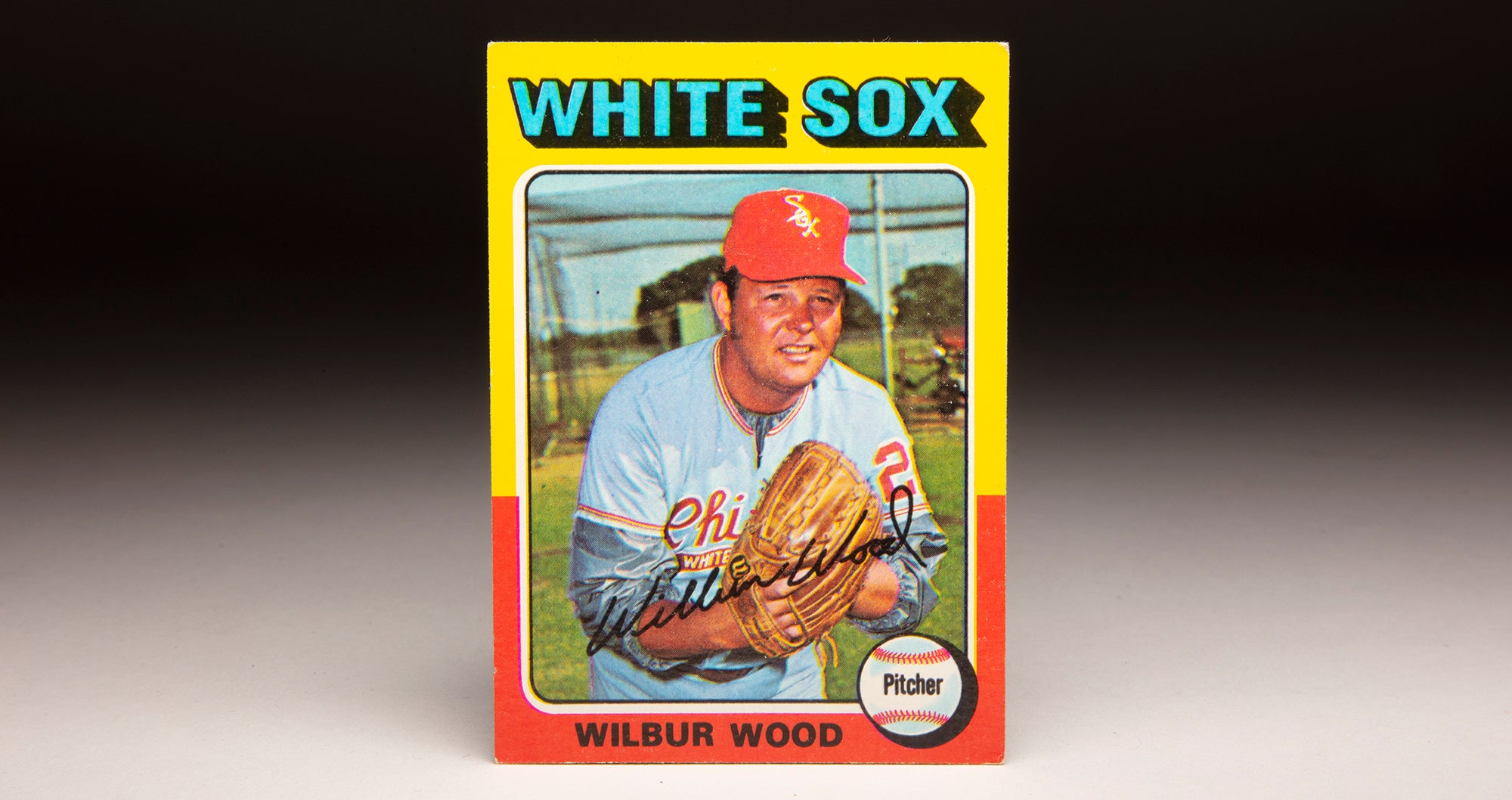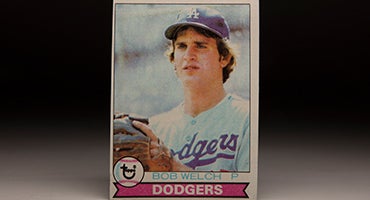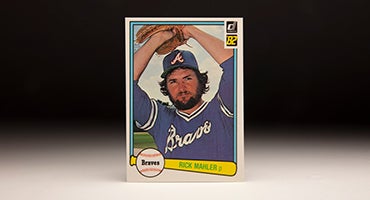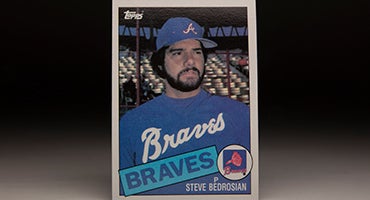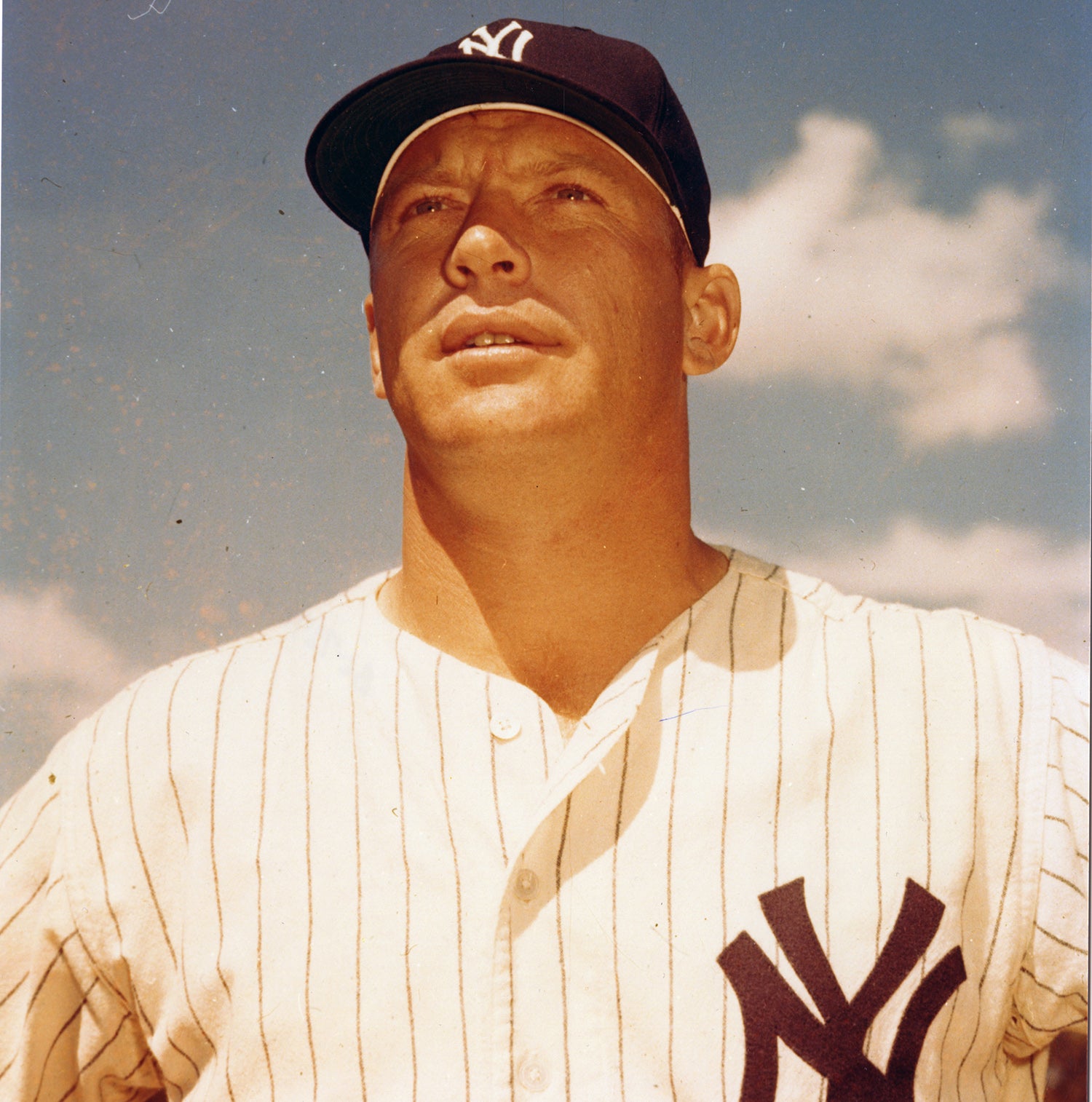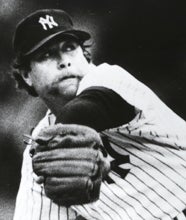- Home
- Our Stories
- #CardCorner: 1986 Topps Terry Forster
#CardCorner: 1986 Topps Terry Forster
Terry Forster pitched to a 3.23 ERA over 614 games during 16 big league seasons, saving 127 games. He was one of the most effective relievers of his time.
But thanks to the power of late night TV, Forster will always be known for David Letterman’s reference to him as a “fat tub of goo” – a moniker that Forster may have earned but should have never defined him.
His World Series ring with the Dodgers would be a much more appropriate legacy.
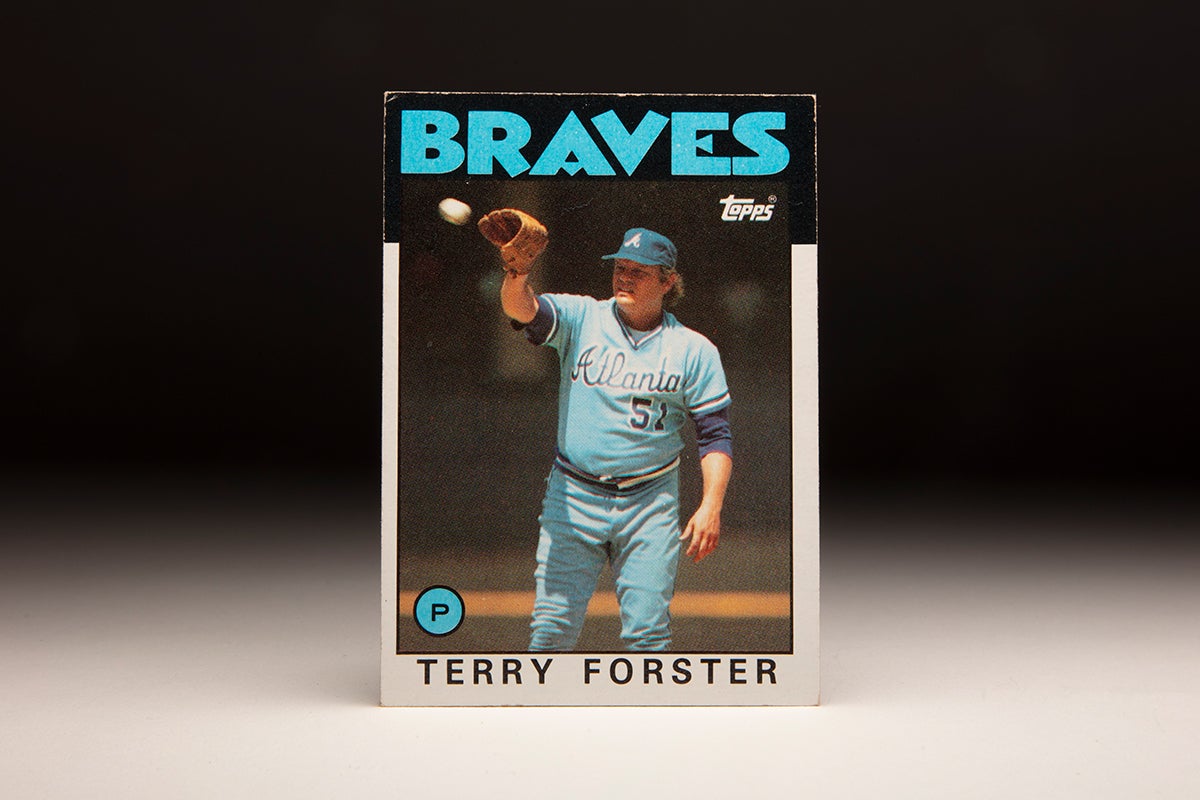
Terry Jay Forster was born Jan. 14, 1952, in Sioux Falls, S.D. – and went on to become the 14th pitcher in big league history born in the Mount Rushmore State. When he was four years old, Forster and his family moved to Santee, Calif. – a San Diego suburb – after his father sold his hardware business.
Forster and his twin brother soon embraced baseball in the year-round sunshine in Southern California.
“Our parents saw a future in the sport,” Forster told the Belvidere (Ill.) Daily Republican in 1973. “Me and my twin brother were four or five years old then and our parents would throw the ball to us and we would roll it around.”
Forster suffered from osteomyelitis in his left knee as a child, which he blamed for the beginning of his issues with body weight. But he also received a letter of support from Mickey Mantle, who suffered from the same knee malady.
“I threw the crutches away the day I got a letter from Mickey Mantle, who once had the same condition,” Forster told the Los Angeles Times. “It was my biggest thrill. I met Mickey nine years later and he couldn’t remember sending the letter. I couldn’t understand how he could forget.”
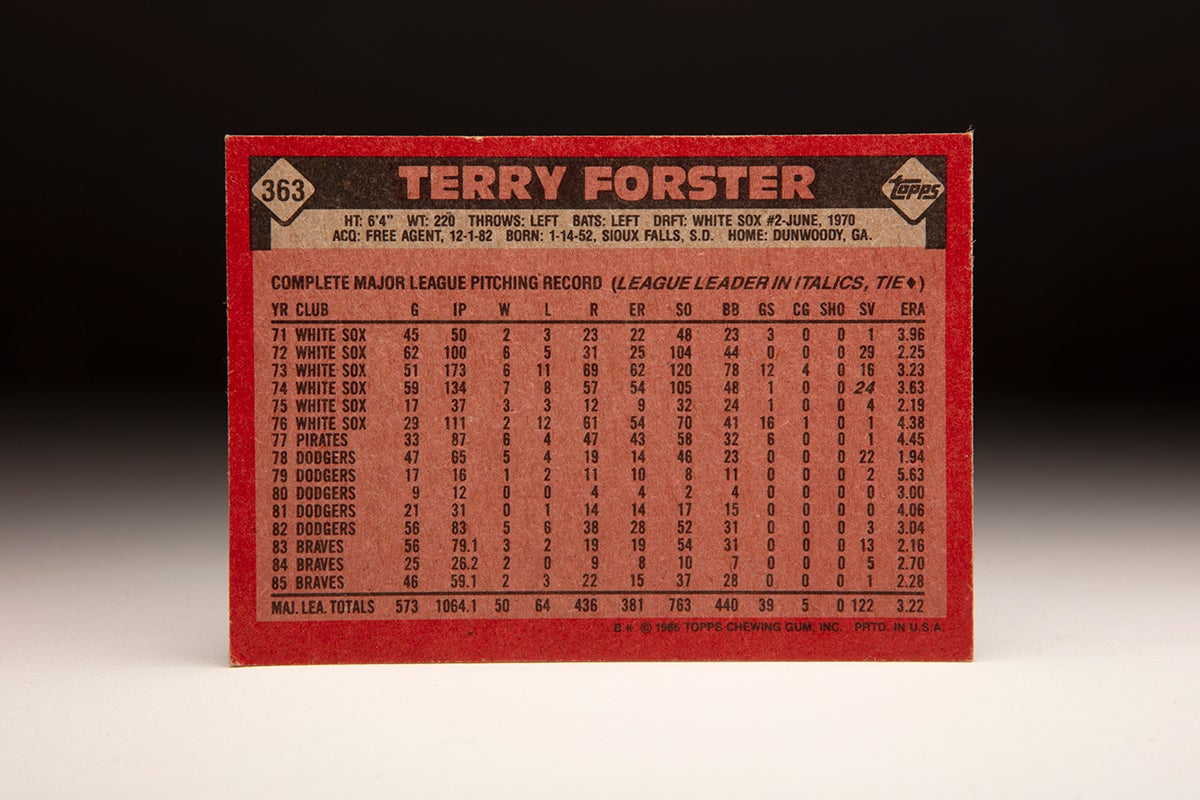
Forster starred in basketball – playing against future Hall of Famer Bill Walton – and baseball at Santana High School, earning conference player of the year honors on the diamond. He began receiving notice from scouts after growing three inches in high school and adding several miles an hour to his fastball, which exploded from his left-handed delivery.
“I always wanted to play pro ball,” Forster told the Daily Republican. “But I didn’t really think about it until junior year when scouts started talking to me and I started reading stories in the papers about myself. Then I realized they were serious.”
Selected by the White Sox in the second round (30th overall pick) in the June 1970 MLB Draft, Forster signed and reported to Class A Appleton of the Midwest League, where he went 6-1 with a 1.33 ERA in 10 games. He was invited to Chicago’s Spring Training camp in 1971 as the White Sox tried to put a 106-loss season in the rear view mirror.
“Here was a team that had lost 80 games by the All-Star break (in 1970),” Forster told the Los Angeles Times. “I said to myself: ‘If I can’t make this team right away, I can’t make any.’”
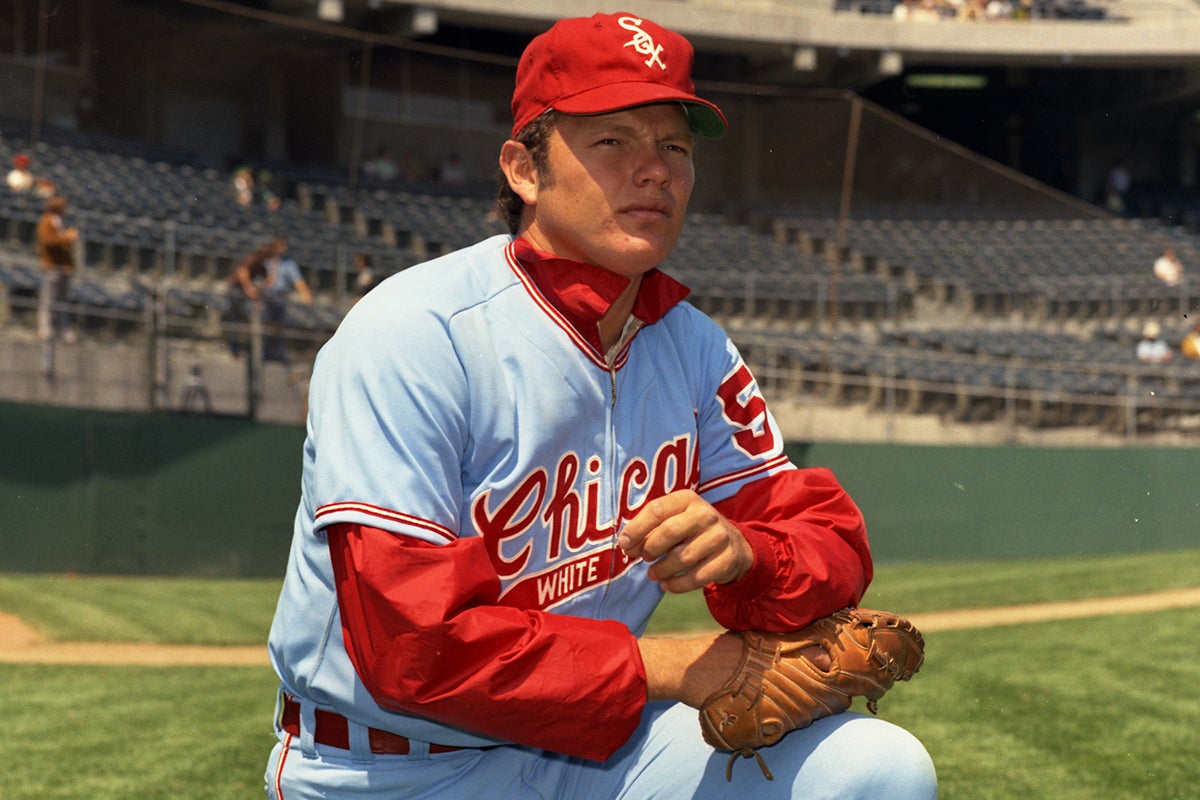
Manager Chuck Tanner, who had taken over the White Sox at the end of the 1970 season, put the 19-year-old Forster on Chicago’s Opening Day roster. He debuted with 1.1 innings of scoreless relief against the Twins in Chicago’s fifth game of the season and worked mostly in low-leverage situations the rest of the year, going 2-3 with a save and a 3.99 ERA in 45 games, striking out 48 batters in 49.2 innings. The White Sox went 8-37 in games Forster pitched but overall finished 79-83 – a 23-game improvement over 1970.
“Every time I got into a ballgame that year,” Forster told the Daily Republican, “we were eight runs behind, it seemed.”
In 1972, Tanner – pioneering bullpen usage – gave Forster the ball in pressure situations, and Forster responded by saving 29 games, second in the American League behind only the Yankees’ Sparky Lyle, who had 35. Forster was 6-5 with a 2.25 ERA in 62 games while striking out 104 batters over 100 innings.
Forster also batted an amazing .526 that season (10-for-19) on the heels of his .400 average (2-for-5) in 1971. For his career, Forster batted .397 (31-for-78) – the best average for any AL/NL pitcher with at least 50 plate appearances.
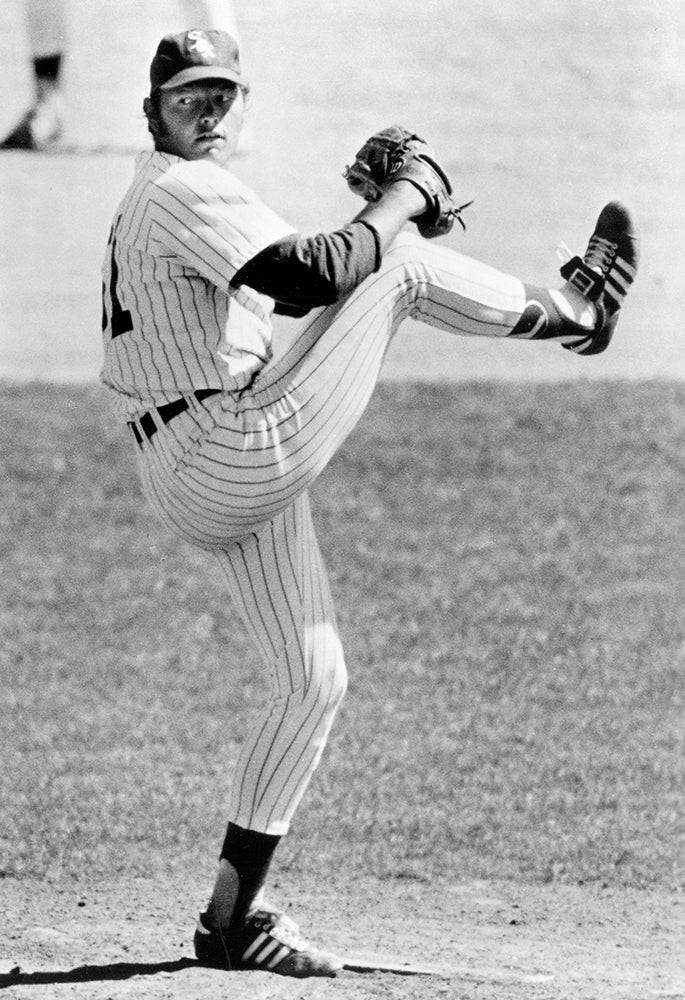
Future Hall of Famer Goose Gossage debuted with the White Sox in 1972, teaming up with Forster to give the White Sox a powerful bullpen that helped the team win 87 games and finish second in the AL West. In 1973, Forster was headed toward another 20-plus save season with 16 saves and a 2.18 ERA when the White Sox moved him into the starting rotation in August. He was much less effective as a starter, taking the loss in his final six games of the year and finishing the season with a 6-11 record and 3.23 ERA over 51 games, including 12 starts.
“I wasn’t pitching a complete game,” Forster told the Daily Republican. “That is, I was throwing the fastball, but you can’t do it all the time. You need off-speed pitches and the straight change. I got hit but I learned my lesson: I learned to keep the ball away from batters and throw at their ankles.”
White Sox pitching coach Johnny Sain helped Forster expand his pitch repertoire, and in 1974 Tanner moved Forster back to the bullpen. He made just one early-season spot start, finishing the year with a 7-8 record and MLB-leading 24 saves to go with a 3.62 ERA over 59 appearances.
But in 1975, Forster’s workload – which featured an average of almost 136 innings per season from 1972-74 – caught up with him. While facing Detroit’s Willie Horton in the eighth inning of a May 23 game at Comiskey Park, Forster injured his left arm and had to be relieved in the middle of the at-bat by Cecil Upshaw. Forster appeared in only two more games that season, going 3-3 with four saves in 17 appearances.
Gossage, meanwhile, moved into the closer’s role and saved a big league-leading 26 games.
Forster was unsure if he’d ever pitch effectively again.
“I thought I’d have to take over the housework and send Pam (his wife) looking for a job,” Forster told the Los Angeles Times. “One of the problems was that the White Sox doctors had me do nothing but rest. Rest was important but it did nothing for strengthening the arm. It wasn’t until I got to Pittsburgh and began a daily weightlifting program that I really developed any kind of strength.”
The White Sox replaced Tanner with Paul Richards after the 1975 season, and Richards was not a proponent of the new bullpen strategies that were sweeping the game. He moved both Gossage and Forster into the White Sox’s starting rotation, and Forster finished the season 2-12 with a 4.37 ERA in 29 games.
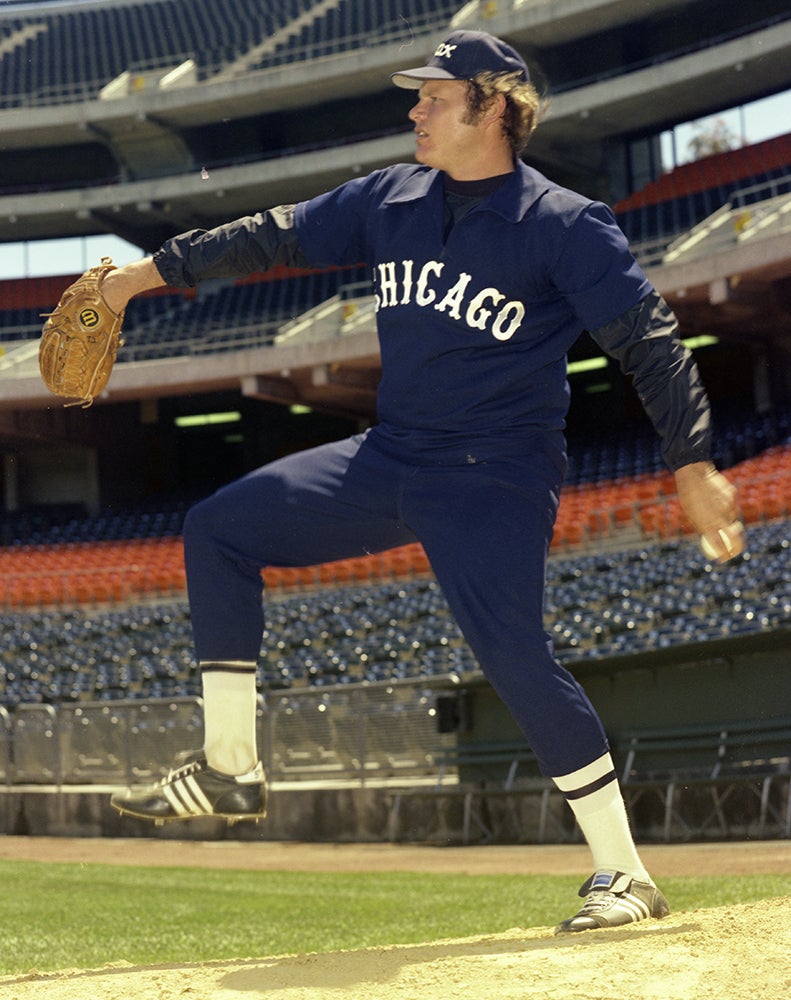
Then on Dec. 10, 1976, the White Sox sent Forster and Gossage to the Pirates in exchange for slugging outfielder Richie Zisk and pitcher Silvio Martínez. Zisk, Forster and Gossage were all slated to become free agents following the 1977 season, effectively making the deal a rental move for both teams. But the Pirates were willing to gamble on Forster and Gossage after Tanner was traded from Oakland – where he managed in 1976 – to Pittsburgh on Nov. 5. Tanner immediately put his two former White Sox pitchers back in the bullpen, and Gossage thrived in the assignment, going 11-9 with 26 saves and a 1.62 ERA, striking out 151 batters over 133 innings.
Forster, however, found innings hard to come by with Gossage and Kent Tekulve (10-1, seven saves in 72 appearances) in the same bullpen.
Forster finished the season 6-4 with one save and a 4.43 ERA in 33 games for a Pittsburgh team that won 96 games but finished second in the NL East behind the Phillies.
“Pittsburgh had such bullpen strength that one mistake and you disappeared for a month,” Forster told the Los Angeles Times. “Over the second half, my arm was 100 percent. My fastball and curve were as good as they had ever been. The injury taught me how to finesse hitters, how to hit spots. I had become a pitcher rather than a thrower. The question was: Would anyone take a chance, had anyone seen enough of me to realize my arm was back?”
The NL champion Dodgers had seen enough and signed Forster to a five-year, $850,000 contract on Nov. 22, 1977. He was the first modern free agent signed by the Dodgers.
Gossage, meanwhile, signed with the Yankees.
“What we felt we lacked (in 1977) was the one consistent, dependable pitcher in the bullpen,” Dodgers general manager Al Campanis told the Los Angeles Times. “Forster has done it before and is young enough to do it again.”
Tanner, who would turn to Tekulve as his closer and ride his Pirates bullpen to the World Series title in 1979, believed Forster was a perfect fit for the Dodgers.
“His arm is as good as it ever was,” Tanner told the Times. “And at one point it was good enough to throw with the same velocity as a Nolan Ryan. He’s courageous and tenacious.”
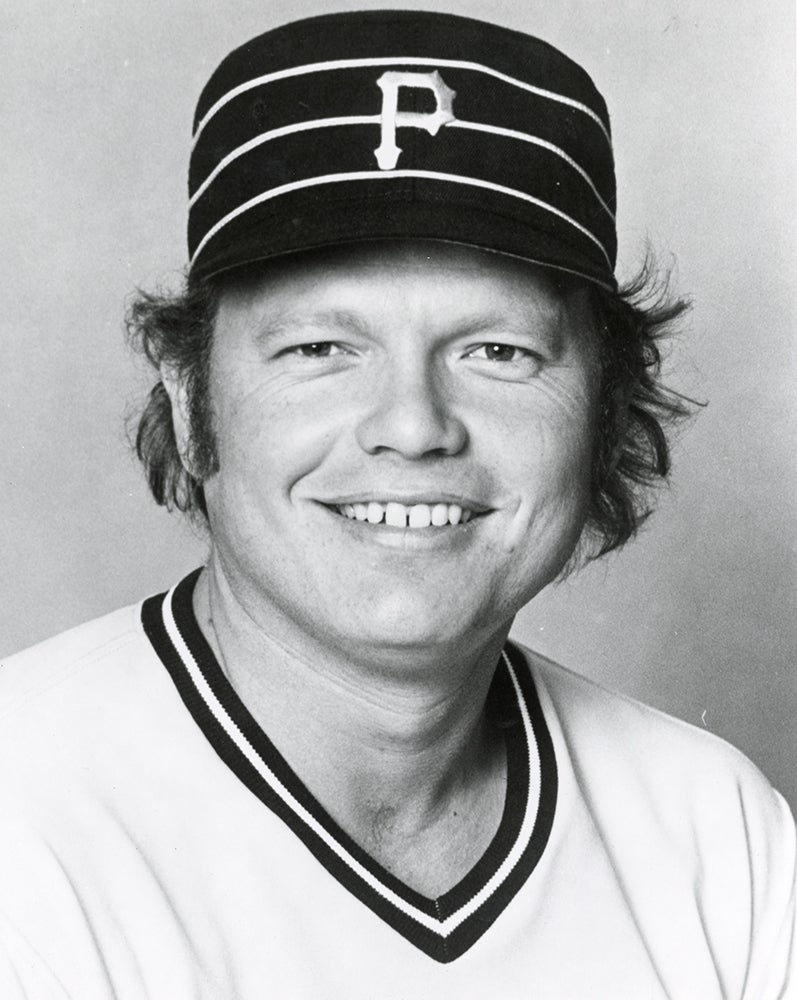
Forster gave the Dodgers exactly what they were looking for in 1978, replacing Charlie Hough as the team’s primary closer and saving 22 games to go with a 5-4 record and 1.93 ERA over 47 appearances. The Dodgers repeated as NL West champions and advanced to the NLCS against the Phillies, where Forster made his postseason debut in Game 4. He worked a scoreless top of the 10th inning, and when the Dodgers scored in the bottom of the frame, it gave Los Angeles a 4-3 win and a 3-games-to-1 win in the series.
“I hope all our starters do well, but if they don’t, I’d love to pitch in every game,” Forster told United Press International prior to the World Series against the Yankees. “This is what it’s all about, isn’t it? When you’re a kid cooped up in a little room in Appleton, Wis., all you can do is dream about something like this.”
Forster’s fastball/slider combination continued to serve him well in the World Series, as he worked four innings over three games, permitting just five hits and no runs. He lost a chance for a save in Game 2 when he allowed a single and a walk in the ninth sandwiched around a groundout, bringing up Thurman Munson with the Dodgers clinging to a 4-3 lead. Bob Welch relieved Forster and got Munson to fly out before striking out Reggie Jackson in a confrontation that electrified fans across the country.
But despite that win that gave the Dodgers a 2-games-to-0 lead, New York won the next four games to claim the title.
Forster underwent what he thought would be minor surgery to clean out his elbow following the season. But doctors found more damage than expected and removed some bone chips and relocated nerves. He did not make his first appearance of the season until May 25, 1979 – and even then he ignored team physician Dr. Frank Jobe’s orders to sit out a year after his surgery.
After struggling to a 1-2 record and 5.51 ERA over 17 outings, Forster underwent follow-up surgery on Aug. 16, ending his season. The 1980 season proved no better as Forster pitched in just nine games and did not record a decision or a save.
“I’m sorry I rushed it,” Forster told UPI in the spring of 1981 of his decision to return early from surgery in the 1979 season. “It cost me a year-and-a-half and another operation.
“It’s at a point where I have to make this team. If I don’t do it this time, that’s it.”
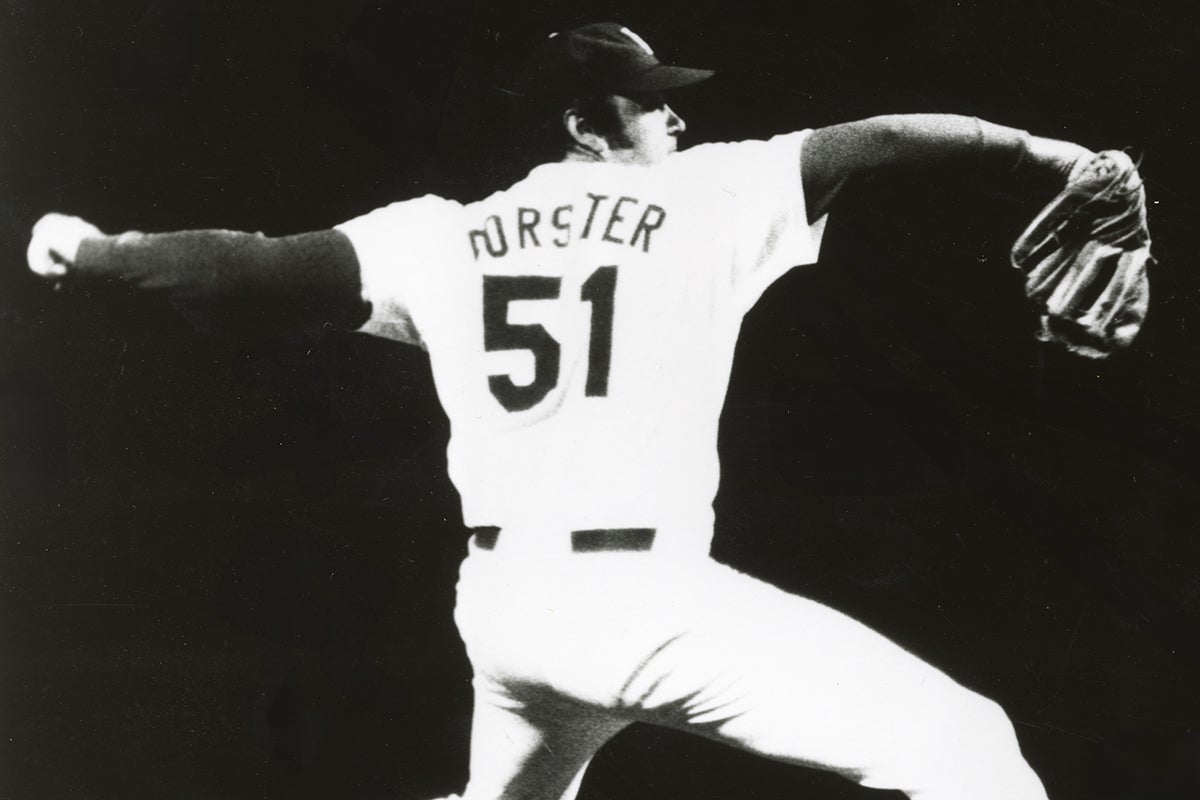
Forster did make the team and slowly regained his form during the 1981 season, finishing with a 4.11 ERA over 21 games while going 0-1 and failing to record a save. But the Dodgers advanced to the postseason, and Forster contributed in each postseason series. He worked a game apiece in the NLDS and NLCS – recording situational single outs in both contests – before pitching a scoreless inning in Game 2 of the World Series against the Yankees. Then in Game 4, the Dodgers found themselves down 2-games-to-1 in the series and 4-2 after three innings. Forster worked a scoreless fourth inning, and the Dodgers rallied to win 8-7 to tie the series. Los Angeles went on to win in six games to give Forster a World Series ring.
In his final year of his contract in 1982, Forster was healthy and appeared in 56 games, going 5-6 with three saves and a 3.04 ERA as Steve Howe and Tom Niedenfuer shared the Dodgers’ closing duties. He was one of the most popular players in the clubhouse, having earned a reputation as a prankster that dated back to when he practiced sliding in an Appleton cemetery before his manager, Ira Hutchinson, banned it.
“A left-hander is a little weird to start with,” Forster told the Los Angeles Times. “On top of that 99 percent of relief pitchers are definitely flaky. I may be the only sane one.”
But his year ended on a down note when he surrendered a three-run home run to Joe Morgan of the Giants in the final game of the year, giving San Francisco a 5-2 lead in a game Los Angeles lost 5-3. Had the Dodgers won, they would have finished in a dead heat with the Braves in the NL West, necessitating a one-game playoff.
On Dec. 1, 1982, Forster agreed to a three-year contract with the Braves worth a reported $1.45 million.
“We were highly interested in Terry because of our shortage of left-handed pitching,” Braves general manager John Mullen told the Associated Press. “With Terry, (Gene) Garber and (Steve) Bedrosian, that’s not a bad bullpen.”
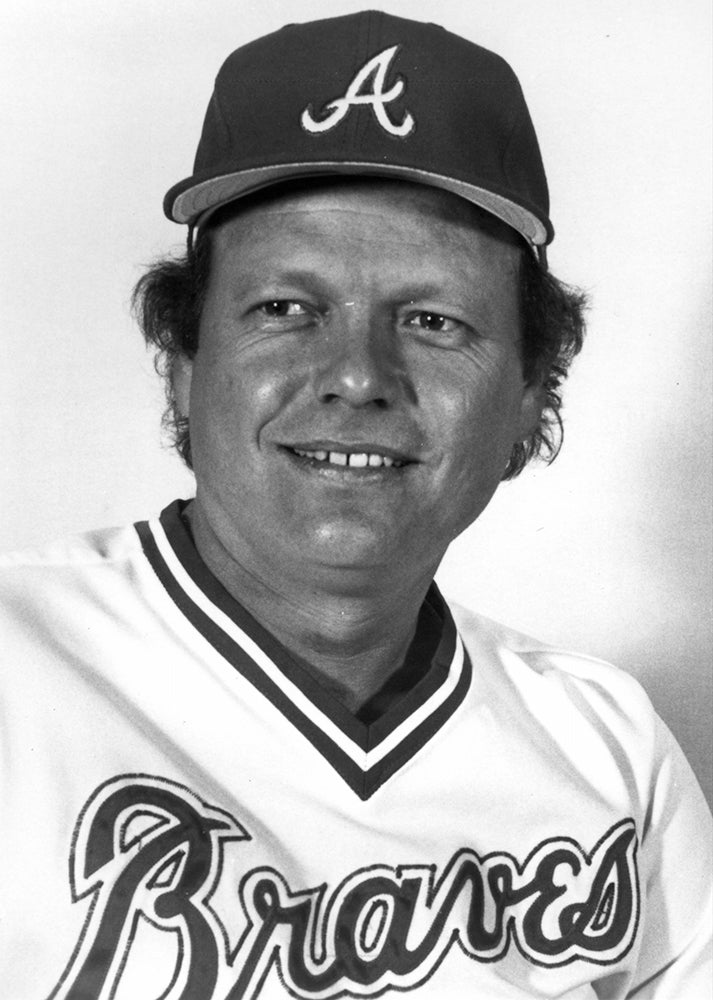
The Braves had won the NL West in 1982 but were unable to repeat the following year despite Forster’s 3-2 record, 13 saves and 2.16 ERA over 56 games. Forster was having another solid season in 1984 when he was called on to pitch six innings out of the bullpen against the Padres on June 12. He allowed just three hits and no runs in those six innings but Atlanta lost to San Diego 7-6 in 12 innings.
Soon after that game, Forster was sidelined with a right hamstring injury that limited him to just five appearances after June 23. His weight was becoming an issue as well, with published reports indicating he now weighed in excess of 240 pounds.
But Forster remained effective in 1985, going 2-3 with a 2.28 ERA over 46 games. After David Letterman’s infamous on-air comment about his weight, Forster was invited to appear on Letterman’s Late Night show as a guest and lampooned himself by eating a sandwich on stage.
Entering his age-34 season to start the 1986 season, Forster signed a non-guaranteed deal worth $490,000 if he made the team. He worked 10.2 innings for the Braves that spring, got his weight down to around 230 pounds and posted a 1.69 ERA. But Atlanta released him on April 1.
“Life goes on,” Forster told the Atlanta Journal after being let go.
Forster signed with the Angels two weeks later and appeared in 41 games, going 4-1 with a 3.51 ERA and five saves while helping the team win the AL West title. But he was not included on the Angels’ postseason roster.
He signed with the Twins midway through the 1987 season and appeared in 13 games for Triple-A Portland, going 0-1 with a 7.27 ERA. He did not make it back to the majors, however, and his career soon ended.
Over 16 big league seasons, Forster was 54-65 with his 127 saves, striking out 791 batters over 1,105.2 innings. And though he gained what may have been unwanted notice from David Letterman in June of 1985, Forster was always able to maintain a positive attitude – and an ability to retire batters in the most pressure-packed innings of a game.
“No questions about it, I don’t think too much,” Forster told the Los Angeles Times in 1977. “What I mean is that I don’t let anything bother me. Relief pitching is all mental. You’ve got to believe you can do the job. You’ve got to be cocky, a little conceited.”
Craig Muder is the director of communications for the National Baseball Hall of Fame and Museum

